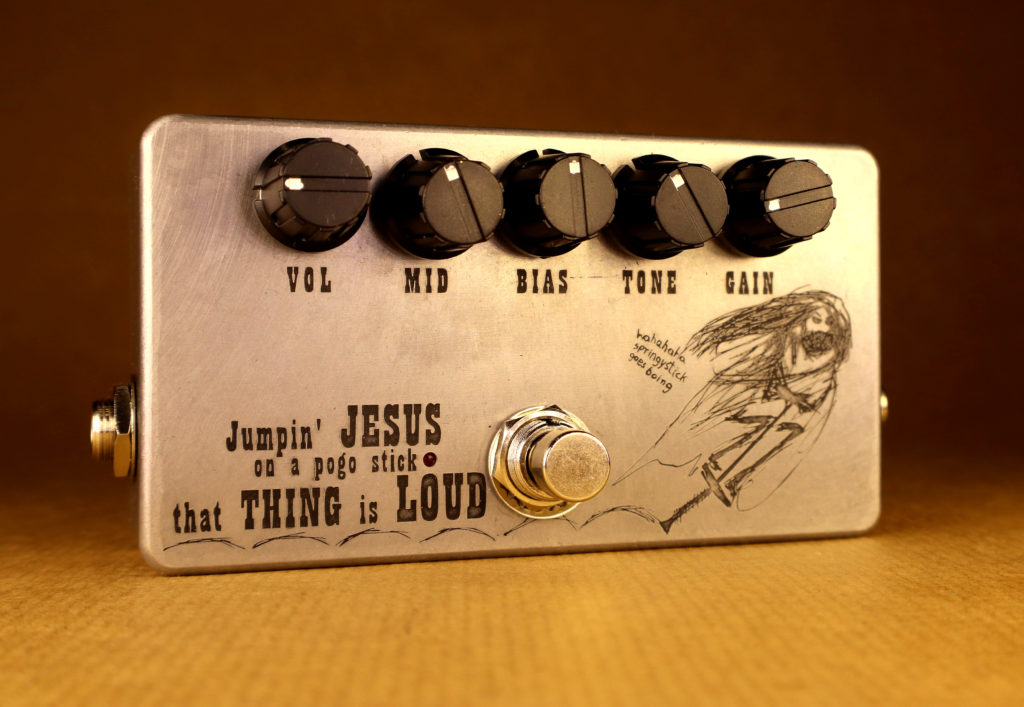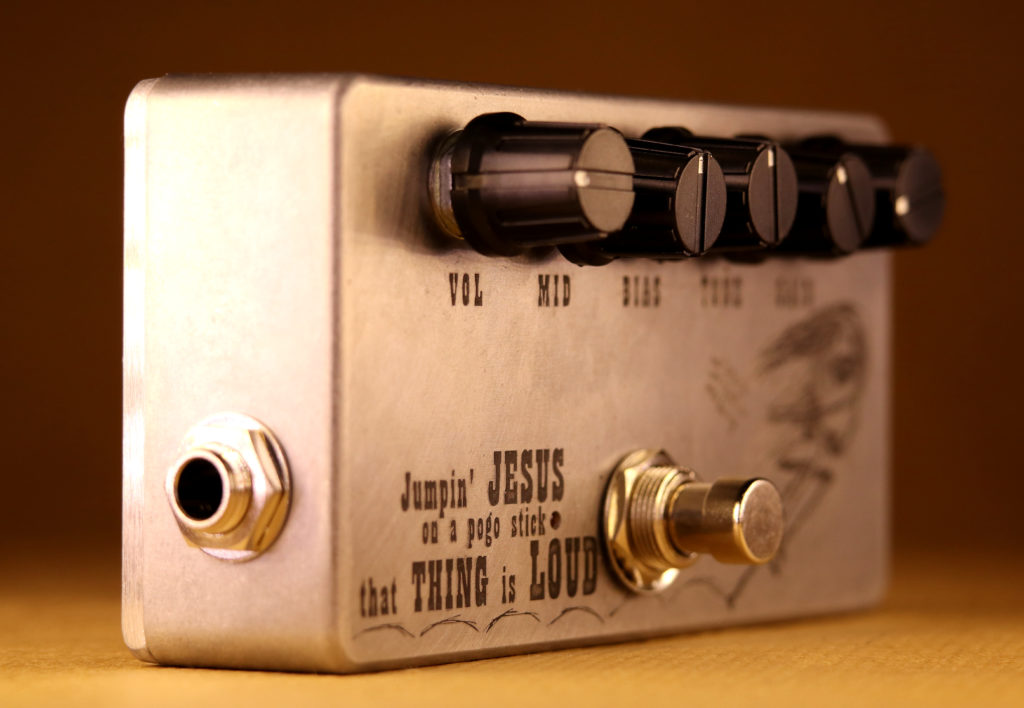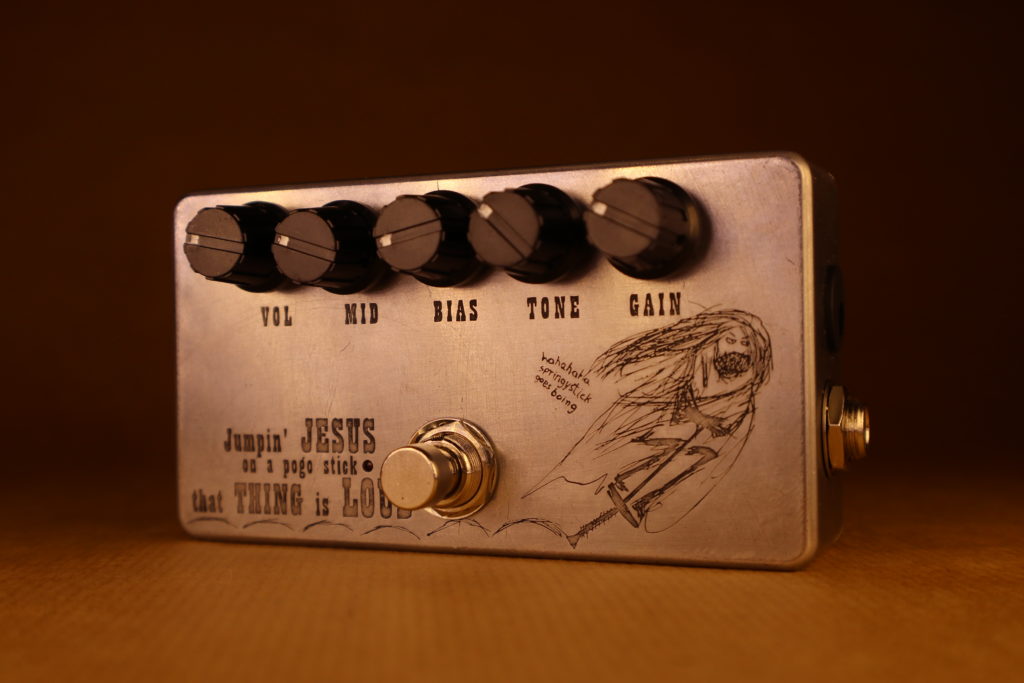
“what the hell was I thinking?”
-me
Jumpin’ Jesus on a Pogo Stick.
When you really need that window gone…
…and you don’t have a hammer on you.
Here’s the story with that thing: Found an old circuit board, for a pedal I used to offer (“All That Fuzz!”). No longer had the wooden enclosures in that size. Found out the board will fit in a standard aluminum enclosure. Thought of a name… and well.. you be the judge.
About the pedal: It’s a silicon / germanium fuzz pedal with tons of sweet spots on it. From light crunch to total doom, with sputtery, synthy, 8-bity choppy parts in between – it does it all.
In a nutshell:
- Handmade top to bottom.
- Hybrid design – high gain silicon transistor stage pushing two low gain germanium transistor stages into full saturation and beyond.
- Bias control – takes your tone from muffled, through wide open, through rough and aggressive to choppy, dying, mis-biased amp sound.
- LOTS of volume on tap.
- One knob tone control with separate midrange response knob.
- Standard 9V power jack, takes less than 20mA, happy to take 12V for more headroom.
- True bypass.
A bit more detail? There you go:
This pedal is built with three transistor stages. The first one that your signal meets is a modern, high gain silicon stage. Through tone control, it feeds a vintage, NOS germanium transistor stage, that feeds another one just like itself. I took those transistor out of a sealed box myself. They were never used before. The box was dated (by hand!) at early 80’s.
The knobs:
- VOL – pretty self-explanatory. Output volume control. Use it with caution. DO NOT set it to noon before you plug that pedal in for the first time. It’s really loud.
- MID – the midrange control. Scoop the mids to the left, boost them to the right. The scoop/boost takes place around the 1kHz sweet spot. Most noticeable when the tone knob is not in any of its extreme positions.
- BIAS – it’s the bias control of the two germanium stages. Most natural response of the pedal is achieved when this knob is set to around 9-10 o’clock. Turn it left to calm the pedal down or muffle it. Turn it to noon and past for some nasty 8-bit action.
- TONE – quite obvious. More highs to the left, more lows to the right. The control is put BEFORE the final amplification stage, so it also affects which frequencies are getting distorted and fuzzed out.
- GAIN – yeah, you want to max it out. Yeah, don’t. At least during your first ride. With gain set just above minimum and bost at 8 o’clock you get a quite nice, light crunchy drive. But just touch one of those knobs and it’s goodbye to Mr. Nice Guy. But see for yourself:





